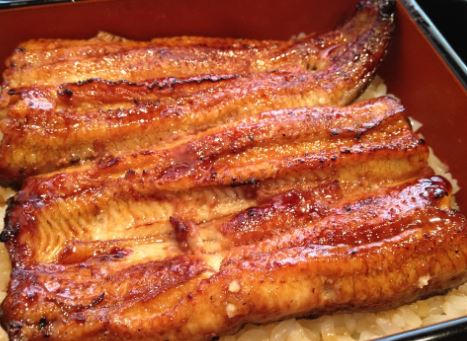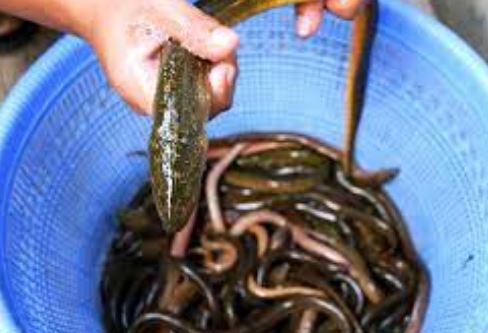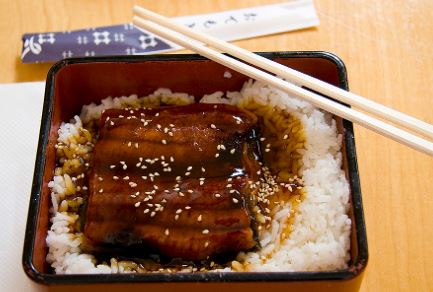When one thinks of Japanese cuisine, sushi and ramen might be the primary things that come to mind. But there’s one delicacy that frequently goes unnoticed: Unagi, or freshwater eel. Unagi is a staple in Japanese cuisine and has a wealthy history behind it. It’s regularly served as a sushi dish or grilled over charcoal for a flavorful taste this is in contrast to another. But in which does this precise food come from, and what makes it so unique? In this blog post, we’ll discover the charming tale in the back of Unagi, from its origins in historic Japan to how it is enjoyed today. We’ll additionally take a more in-depth study the dietary benefits of Unagi and why it is well worth attempting, even if you’re now not an adventurous eater. So, allow’s resolve the thriller of Unagi and find out everything you need to recognise approximately this scrumptious and fascinating delicacy.
Introduction to Unagi: The Japanese Delicacy
Unagi, the awesome freshwater eel, has captivated the flavor buds of food fanatics round the sector. Considered a delicacy in Japanese cuisine, this mysterious creature has a charming story that adds to its appeal. Unagi, regarded for its rich taste and succulent texture, has been loved in Japan for centuries, but its journey from river to plate is a system shrouded in subculture and culinary artistry.
The origins of unagi intake hint returned to ancient Japan, wherein it became believed to provide energy and power. Unagi turned into surprisingly prized for its dietary fee and precise flavor, making it a sought-after delicacy among emperors and nobles. Over time, the appreciation for unagi spread for the duration of the u . S ., turning it into a liked dish for all.
The system of making ready unagi is meticulous and calls for understanding. Fishermen mission into rivers and lakes to capture wild freshwater eels, that are then skillfully organized with the aid of skilled chefs. One of the most well-known strategies of cooking unagi is kabayaki, where the eel is filleted, skewered, and grilled over charcoal. This technique enhances the herbal flavors of the eel, ensuing in a caramelized glaze that adds intensity to its sensitive flesh.
What sets unagi apart is its unique flavor profile. Its meat is gentle and buttery, with a diffused sweetness that perfectly balances the savory notes. The aggregate of flavors creates a culinary experience this is each pleasing and unforgettable. Whether served on a bed of rice or wrapped in sushi, unagi leaves a long-lasting influence on anyone lucky enough to flavor it.
Beyond its culinary significance, unagi holds cultural symbolism in Japan. It is frequently related to the summer season, particularly in the course of the midsummer day of the ox, referred to as “Doyo no Ushi no Hi.” On at the moment, it’s far believed that eating unagi offers stamina to endure the sweltering warmness of summer season.


The fascination with Unagi in Japanese delicacies
Unagi, or freshwater eel, holds a unique vicinity in Japanese delicacies, captivating both locals and traffic alike. The fascination with unagi may be traced again centuries, as it has been an imperative a part of Japanese culinary traditions and cultural practices.
In Japan, unagi is highly seemed for its wealthy flavor, smooth texture, and precise flavor profile. The meticulous preparation and cooking strategies concerned in serving unagi further enhance its attraction. Grilled over warm charcoal, the eel develops a smoky and barely candy taste that pairs perfectly with the accompanying sauce.
Beyond its culinary attributes, unagi also incorporates symbolic significance in Japanese culture. It is assumed to deliver top success, prosperity, and stamina. This belief is deeply rooted in folklore and historic practices, where eating unagi at some stage in the recent and humid summer season months changed into idea to provide electricity and power.
The reputation of unagi extends past the confines of Japan. It has won global reputation and has grow to be a sought-after delicacy in lots of elements of the arena. This rising demand has posed challenges to the sustainability of eel populations. Efforts are being made to sell accountable sourcing and conservation practices to shield the eel species and make sure its availability for destiny generations.
Unraveling the thriller: The existence cycle of the freshwater eel


The life cycle of the freshwater eel is a fascinating and mysterious journey that has perplexed scientists for centuries. Unlike maximum fish species, the eel goes via a incredible transformation, starting its life within the depths of the sea and ending up in freshwater rivers and lakes.
It all begins inside the full-size open ocean, in which tiny, obvious larvae called leptocephali hatch from eggs laid through adult eels. Drifting in ocean currents, these larvae embark on an first-rate migration that spans heaps of kilometers. The precise vicinity wherein they’re born and the adventure they adopt still stays somewhat of a thriller.
As the leptocephali develop, they undergo a extremely good metamorphosis. Their our bodies elongate, their heads take form, and their transparent our bodies gradually darken. Eventually, they transform into what is called glass eels. These slender, translucent creatures make their manner towards the coastlines, navigating thru estuaries and rivers until they attain freshwater habitats.
Once they have reached freshwater, the glass eels undergo but another transformation, becoming elvers. These juvenile eels adapt to their new surroundings, growing pigmentation and a more mature appearance. They continue to grow and feed on various organisms, including insects, small fish, and crustaceans, while slowly making their manner upstream.
As the elvers mature, they emerge as called yellow eels because of their golden-brown color. They spend several years in freshwater, feeding and developing, before they reach sexual adulthood. During this time, they’ll stumble upon various limitations together with dams and weirs, which they navigate with outstanding dedication.
Once the yellow eels reach adulthood, they prepare for their very last and most terrific transformation. They undergo physiological modifications, which includes the improvement of a silvery pores and skin, as they put together for their epic adventure again to the sea. This is known as the silvering level, which marks the beginning of their migration towards the ocean.
As they make their manner downstream, the silver eels go through amazing physical adjustments. Their digestive structures decrease, and their eyes amplify, allowing them to discover their way again to the ocean. They conquer severa limitations, swimming towards robust currents and leaping over limitations, in a constant pursuit in their remaining destination.
Upon achieving the sea, the silver eels embark on their very last journey. They navigate the vast depths, pushed via an instinctual desire to spawn. Little is thought about their reproductive behavior, because the method has in no way been witnessed at once. However, scientists accept as true with that the eels travel lots of kilometers to the Sargasso Sea, an area within the North Atlantic Ocean, to release their eggs and sperm.
The ancient importance of Unagi in Japanese culture
The freshwater eel, called Unagi in Japan, holds a deep-rooted ancient importance in Japanese subculture. For centuries, Unagi has been loved and celebrated as a delicacy, believed to possess various fitness advantages and a unique taste profile that tantalizes the flavor buds.
Unagi has been a part of Japanese delicacies given that historical instances, and its consumption can be traced lower back to the Edo period (1603-1868). During this era, Unagi became specially famous a number of the operating-class population, who believed that it provided stamina and power wished for arduous tasks. The lifestyle of ingesting Unagi advanced into a seasonal ritual, with the tradition of consuming it on precise days to thrust back the summer time warmness, referred to as “Doyo-no-Ushi-no-Hi.”
Interestingly, Unagi additionally holds a special place in Japanese folklore and mythology. It is said that the mythical creature called the “Unagi no Yurai” had the ability to transform into an eel and provide everlasting young people and durability to individuals who fed on it. This perception further more advantageous the reverence for Unagi and solidified its position as a prized ingredient in Japanese delicacies.
Unagi’s cultural significance extends past its consumption. The artwork of making ready Unagi, called “kabayaki,” has been exceeded down via generations, with skilled chefs learning the technique to create the right stability of flavors. The manner entails filleting the eel, skewering it, and grilling it over a charcoal fire earlier than glazing it with a candy and savory sauce. This meticulous preparation technique now not only enhances the taste however also showcases the craftsmanship and attention to detail that is deeply ingrained in Japanese culinary traditions.
The conventional artwork of cooking Unagi: Kabayaki-style guidance
The conventional artwork of cooking Unagi, particularly in the Kabayaki-fashion, is a culinary adventure that dates again centuries. This approach of preparation showcases the delicate flavors and textures of the freshwater eel, elevating it to a stage of culinary excellence.
To start, the eel is carefully filleted, making sure precision and understanding to maintain the integrity of the fish. The fillets are then marinated in a special sauce crafted from a mixture of soy sauce, mirin (a candy rice wine), and sugar. This marinade now not handiest imparts a rich umami taste but additionally helps to tenderize the eel, ensuing in a soften-in-your-mouth texture.
Once the eel has absorbed the flavors of the marinade, it’s far grilled over charcoal. The grill’s warmth caramelizes the sauce, developing a stunning glaze that perfectly complements the natural sweetness of the eel. The skilled chef should cautiously control the cooking time and temperature to ensure the eel is cooked to perfection – smooth and succulent, with a barely crispy outside.
The Kabayaki-style preparation can pay homage to the long-standing traditions of Japanese delicacies. It showcases the meticulous interest to detail and appreciate for elements which have made Japanese meals famend international. Each step inside the cooking procedure is accomplished with precision and care, resulting in a dish that now not most effective tantalizes the flavor buds however additionally tells a story of tradition and subculture.
When served, the grilled Unagi is commonly observed via a mattress of steamed rice and drizzled with additional sauce. This combination creates a harmony of flavors – the richness of the eel, the diffused sweetness of the sauce, and the comforting simplicity of the rice. Each bite is a sensory revel in that transports you to the heart of Japan, in which the artwork of cooking and the appreciation of meals are loved.
Unagi as a sustainable meals source: Challenges and conservation efforts
Unagi, or freshwater eel, has long been a delicacy loved in diverse culinary traditions around the sector. However, this delectable fish has confronted demanding situations in phrases of sustainability because of overfishing and habitat loss. As the demand for unagi continues to upward push, it will become important to apprehend the efforts being made to conserve this specific species.
One of the primary demanding situations in maintaining unagi populations is their complex lifestyles cycle. Unagi are catadromous, which means they migrate from freshwater rivers to the sea to spawn after which go back to freshwater habitats. This migration is vital for his or her reproduction and survival. However, the construction of dams and other human sports have disrupted their migration routes, leading to a decline of their populations.
Conservation organizations and studies institutions were actively operating to cope with those challenges. Efforts consist of the advent of fish ladders and skip channels to help eels bypass barriers and attain their spawning grounds. Additionally, tasks to restore and protect vital freshwater habitats had been applied, ensuring the supply of appropriate environments for unagi to thrive.
Furthermore, sustainable fishing practices and guidelines have been set up to manipulate the harvesting of unagi. These measures purpose to govern fishing quotas, put into effect length limits, and sell accountable fishing techniques that decrease the impact on unagi populations and their habitats.
Education and cognizance play a crucial position in promoting the conservation of unagi. By instructing purchasers about the importance of sustainable seafood selections and the effect of their consumption habits, individuals can make informed selections that guide the maintenance of this first-rate species. Many eating places and seafood suppliers are now actively sourcing eel from sustainable and certified assets, offering purchasers with an possibility to experience unagi even as supporting conservation efforts.
Health blessings of ingesting Unagi: Rich in important vitamins
Consuming unagi, or freshwater eel, no longer handiest satisfies your flavor buds but additionally gives several health benefits. This delicacy isn’t only a flavorful deal with however additionally a nutrient powerhouse that can make contributions in your normal nicely-being.
First and principal, unagi is an superb supply of wonderful protein. Protein is essential for various bodily features, including muscle restore and growth, hormone production, and immune machine help. With its abundance of protein, unagi allow you to meet your each day protein necessities and preserve a healthful frame.
Additionally, unagi is rich in omega-3 fatty acids. These critical fat are recognized for their numerous fitness benefits, mainly in selling heart health. Omega-3 fatty acids help reduce inflammation, guide brain function, and enhance cardiovascular fitness by means of decreasing blood stress and reducing the risk of coronary heart sickness.
Unagi is likewise packed with important vitamins and minerals. It is a superb supply of nutrition A, vitamin D, diet E, and vitamin B12. These vitamins play essential roles in keeping healthful imaginative and prescient, assisting bone health, boosting immune feature, and promoting red blood cellular manufacturing.
Furthermore, unagi consists of essential minerals like potassium, magnesium, and phosphorus. These minerals are crucial for keeping right nerve and muscle feature, promoting bone fitness, regulating blood strain, and assisting typical mobile characteristic inside the body.
When ate up in moderation as part of a balanced weight loss plan, unagi may be a nutritious addition to your meals. However, it’s important to note that unagi can be high in energy and ldl cholesterol, so it is important to revel in it carefully and take into account your average nutritional wishes and health situations.
Exploring the one of a kind approaches to experience Unagi: Traditional dishes and current twists
Unagi, or freshwater eel, has an extended and wealthy records in culinary traditions round the sector. It is a delicacy that has captivated meals fans for centuries, imparting a completely unique and unforgettable eating enjoy. In this section, we can dive into the various methods to experience unagi, both thru traditional dishes and modern twists.
In conventional Japanese delicacies, unagi is typically loved in principal styles: kabayaki and unadon. Kabayaki involves grilling the eel after marinating it in a savory soy-based sauce, ensuing in a succulent and smoky taste. The eel is then served over a bed of steamed rice, developing a satisfying mixture of textures and tastes. Unadon, alternatively, offers the grilled eel on pinnacle of a bowl of rice, generously glazed with a sweet and savory sauce. The comparison among the tender eel and the sticky rice makes for a fulfilling and comforting meal.
While those traditional dishes remain famous, modern-day chefs and food fans have additionally embraced the flexibility of unagi, incorporating it into progressive and surprising culinary creations. Unagi sushi, as an instance, takes thinly sliced eel and combines it with rice and other elements to create delectable sushi rolls or nigiri. The richness of the eel adds a highly-priced touch to the already beloved sushi revel in.
Furthermore, unagi has observed its manner into fusion delicacies, where it’s miles paired with a numerous range of substances to create specific taste mixtures. Unagi tacos, as an example, combo the smoky eel with sparkling vegetables, tangy sauces, and a crispy taco shell, supplying a lovely fusion of Japanese and Mexican flavors. Unagi sliders, then again, offer a playful twist at the classic burger, with smooth eel, flavorful toppings, and a fluffy bun.
For those searching for a lighter alternative, unagi can also be included into salads, imparting a burst of umami and a fulfilling protein source. From grilled unagi salads with a zesty dressing to unagi poke bowls decorated with sparkling greens and toppings, there are infinite opportunities for taking part in this versatile factor.
Unagi fairs and rituals: Celebrating the eel’s significance in Japan
Unagi, or freshwater eel, holds a unique place in Japanese subculture, and its significance is widely known via numerous fairs and rituals. These activities now not simplest exhibit the significance of unagi as a culinary satisfaction but additionally highlight the cultural and historical significance surrounding this mysterious creature.
One of the most famous fairs devoted to unagi is the “Doyo no Ushi no Hi” or “Day of the Ox” festival, which takes location at the most up to date day of the summer, typically in late July or early August. This day is believed to be the first-class time to devour unagi as it offers energy and stamina to resist the sweltering warmth. During this festival, many humans go to traditional restaurants and enjoy a sumptuous meal of grilled unagi.
In addition to the Day of the Ox pageant, there are various neighborhood celebrations throughout Japan that pay homage to unagi. These gala’s regularly feature active parades, conventional dances, and performances, growing a vibrant atmosphere full of excitement and cultural pride. Visitors can savor a extensive variety of unagi dishes, from the classic kabayaki (grilled eel brushed with a sweet soy-primarily based glaze) to specific regional specialties.
Beyond the festivals, there are also rituals associated with unagi. One such way of life is the practice of eating unagi on precise days of the year, along with the Day of the Ox and the midsummer day of the Ox inside the lunar calendar. It is thought that consuming unagi on those auspicious days brings top success, health, and protection from contamination.
Conclusion: Unagi as a culinary delight that embodies way of life and sustainability
In conclusion, unagi isn’t only a delectable culinary satisfaction, but additionally a dish that embodies culture and sustainability. The fascinating story at the back of freshwater eel exhibits a longstanding cultural appreciation for this delicacy and the elaborate strategies concerned in its coaching.
Throughout records, unagi has been revered in diverse cultures, from historical Japan to European medieval banquets. Its unique flavor and texture have captivated the palates of many, incomes it a special place within the global of gastronomy.
However, the journey of unagi from its herbal habitat to our plates is not with out its demanding situations. Due to overfishing and habitat destruction, the eel population has substantially declined in recent years. This has caused worries about the sustainability of unagi as a meals supply.
To deal with these concerns, efforts have been made to promote the conservation and accountable cultivation of eels. Sustainable farming practices have been carried out, ensuring that the eels are bred and raised in controlled environments, reducing the pressure on wild populations.
By assisting sustainable sources of unagi, we can not best take pleasure in its tremendous flavor however additionally contribute to the protection of this specific species. It is a way to experience a culinary culture at the same time as actively participating inside the conservation of our natural sources.
